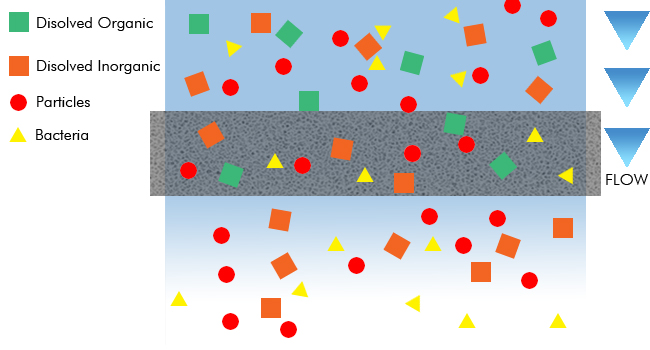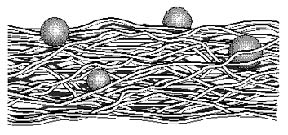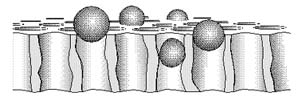
Different water filtration methods explained (Continued)
Carbon Adsorption
Carbon absorption is a widely used method of home water filter treatment because of its ability to improve water by removing disagreeable tastes and odors, including objectionable chlorine. Activated carbon effectively removes many chemicals and gases, and in some cases it can be effective against microorganisms. However, generally it will not affect total dissolved solids, hardness, or heavy metals. Only a few carbon filter systems have been certified for the removal of lead, asbestos, cysts, and coliform. There are two types of carbon filter systems, each with advantages and disadvantages: granular activated carbon, and solid block carbon. These two methods can also work along with a reverse osmosis system, which can be read about below.
Activated carbon is created from a variety of carbon-based materials in a high-temperature process that creates a matrix of millions of microscopic pores and crevices. One pound of activated carbon provides anywhere from 60 to 150 acres of surface area. The pores trap microscopic particles and large organic molecules, while the activated surface areas cling to, or adsorb, small organic molecules.
The ability of an activated carbon filter to remove certain microorganisms and certain organic chemicals, especially pesticides, THMs (the chlorine by-product), trichloroethylene (TCE), and PCBs, depends upon several factors, such as the type of carbon and the amount used, the design of the filter and the rate of water flow, how long the filter has been in use, and the types of impurities the filter has previously removed.

The carbon adsorption process is controlled by the diameter of the pores in the carbon filter and by the diffusion rate of organic molecules through the pores. The rate of adsorption is a function of the molecular weight and the molecular size of the organics. Certain granular carbons effectively remove chloramines. Carbon also removes free chlorine and protects other purification media in the system that may be sensitive to an oxidant such as chlorine.
Carbon is usually used in combination with other treatment processes. The placement of carbon in relation to other components is an important consideration in the design of a water purification system.
| |||||||
Microporous Basic Filtration
There are three types of microporous filtration: depth, screen, and surface. Depth filters are matted fibers or materials compressed to form a matrix that retains particles by random adsorption or entrapment. Screen filters are inherently uniform structures that, like a sieve, retain all particles larger than the precisely controlled pore size on their surface. Surface filters are made from multiple layers of media. When fluid passes through the filter, particles larger than the spaces within the filter matrix are retained, accumulating primarily on the surface of the filter.

The distinction between filters is important because the three serve very different functions. Depth filters are usually used as prefilters because they are an economical way to remove 98% of suspended solids and protect elements downstream from fouling or clogging.

Ultrafilters are available in several selective ranges. In all cases, the membranes will retain most, but not necessarily all, molecules above their rated size.
| |||||||





